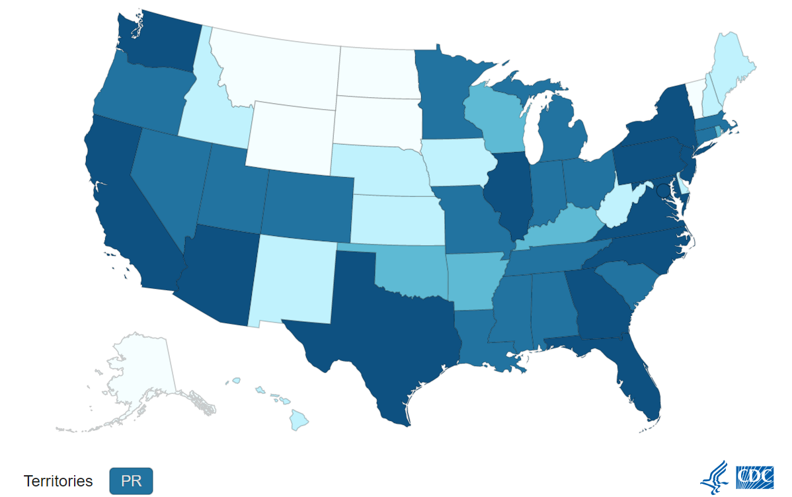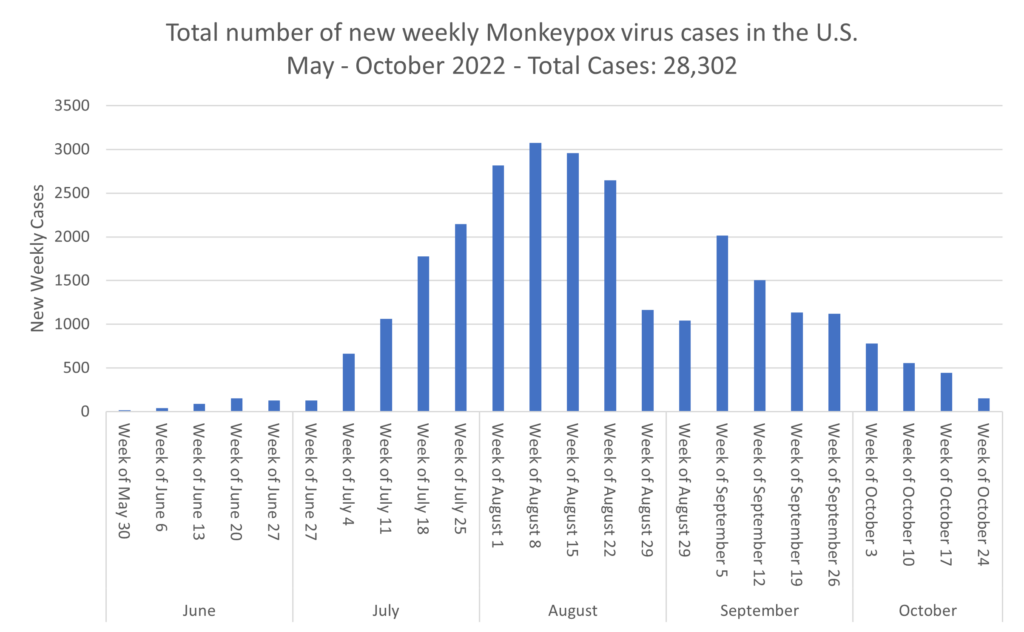With RSV (respiratory syncytial virus) now seeing some spread across the U.S., we have added this disease to our weekly infectious disease update. RSV is a common respiratory virus that usually causes mild, cold-like symptoms from which most people recover within a week or two, but it can be serious especially for the very young and old. It also can cause bronchiolitis and pneumonia in children under 1 year of age in the United States (CDC).
Influenza cases also continue to rise in the U.S. Compared with this time last year, the flu season is in full swing, more comparable to where it usually is in December. A similar trend was observed in Australia this year during their winter flu season. Flu activity is particularly high in the Southern states and are rising in the DC area and surrounding states. We also are seeing COVID cases back on the rise with the new subvariant BQ1.1 starting to account for a larger proportion of cases. Neither the continuing rise in influenza cases nor the rebounding of COVID are unexpected as cooling weather and indoor gathering tend to increase infectious respiratory disease transmission.
On the other hand, new cases of monkeypox are decreasing steadily week to week.
Overall, TAG can only continue to reiterate the recommendations for continued wellness checks in the workplace and ensuring that those who are ill stay home to mitigate transmission as much as possible.
COVID Risk Matrix:



Monkeypox:



Influenza:


Infectious Disease News:
- Ebola. Uganda’s current outbreak has been deemed the worst ever reported. WHO has reported there are 128 confirmed cases and 34 confirmed deaths. CDC has recently reported there are no rapid test kits available to spot infections by Sudan Ebolavirus. Doctors must draw blood samples from patients suspected to have the virus, which are sent off to labs that can test for the strain. As of Oct 25, only 21 public health labs in the US could test for this strain, but efforts are underway to expand this testing capability.
- Influenza. “The CDC says this could be the worst flu season in a decade. It has been more than a decade since hospitalization rates have been this high, so early in the season.” CDC estimates that, so far this season, there have been at least 880,000 flu illnesses, 6,900 hospitalizations, and 360 deaths from flu. The first influenza-associated pediatric death of the 2022-2023 season was reported this week in TX. CDC recommends that everyone ages 6 months and older get a flu vaccine annually. An annual flu vaccine is the best way to protect against flu.
- COVID. COVID infections remain fairly stable across the UK, but other viruses such as flu, norovirus and RSV are increasing, latest data shows. As winter approaches, the World Health Organization on Monday stressed the importance of staying vigilant as cases of COVID and influenza rise in Europe, encouraging more people to get vaccinated. Although different variants are rising in prevalence, experts have not yet labeled XBB or BQ.1 as variants of concern.
- Measles. Measles is on the rise in South Africa, Kenya, and the Philippines where a 200% increase in cases was seen. The pandemic interrupted vaccine campaigns in many countries.
- Tuberculosis. An estimated 10.6 million people fell ill with tuberculosis in 2021, an increase of 4.5% from 2020, and 1.6 million people died from TB (including 187,000 among HIV positive people), according to the World Health Organization’s 2022 Global TB report.





